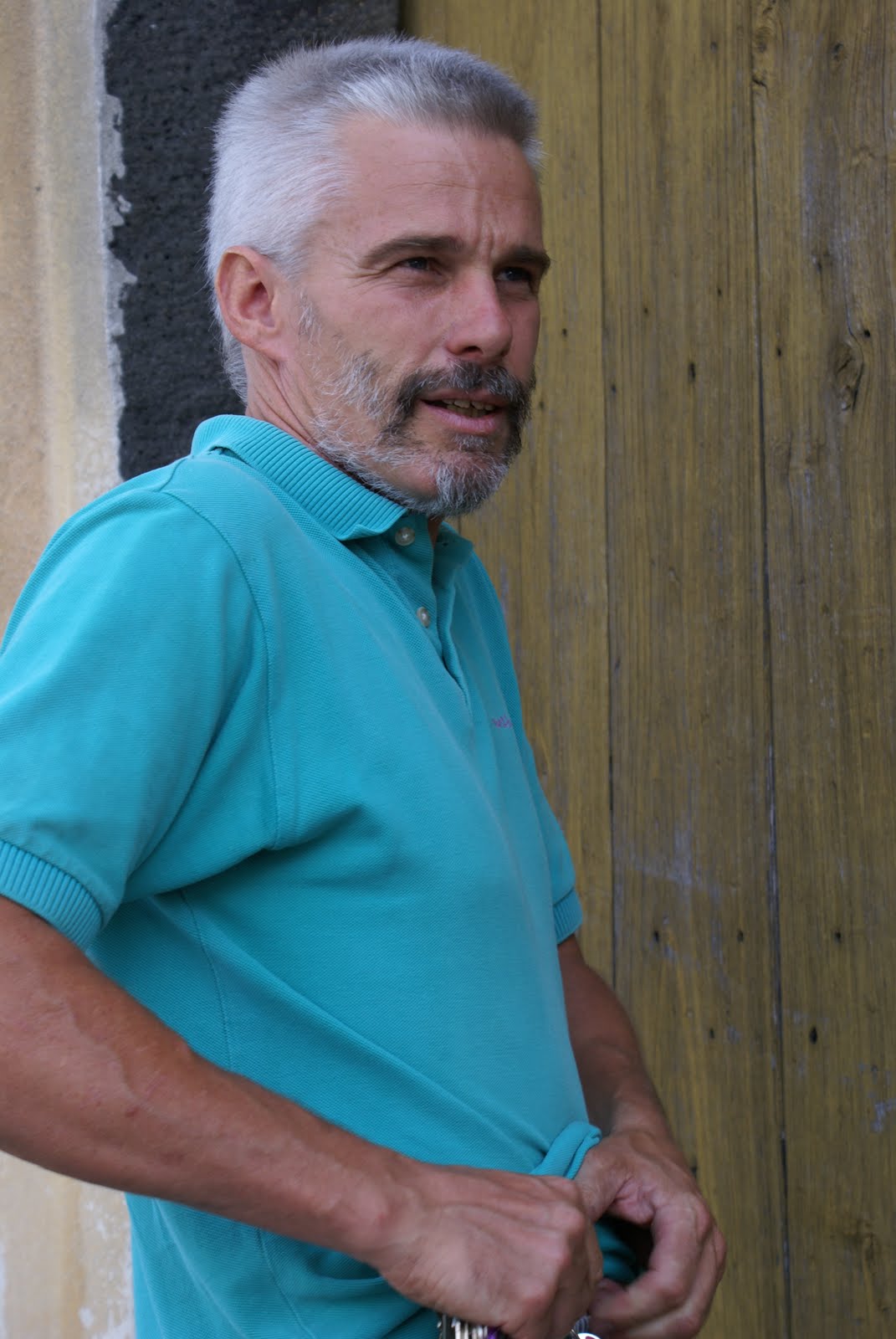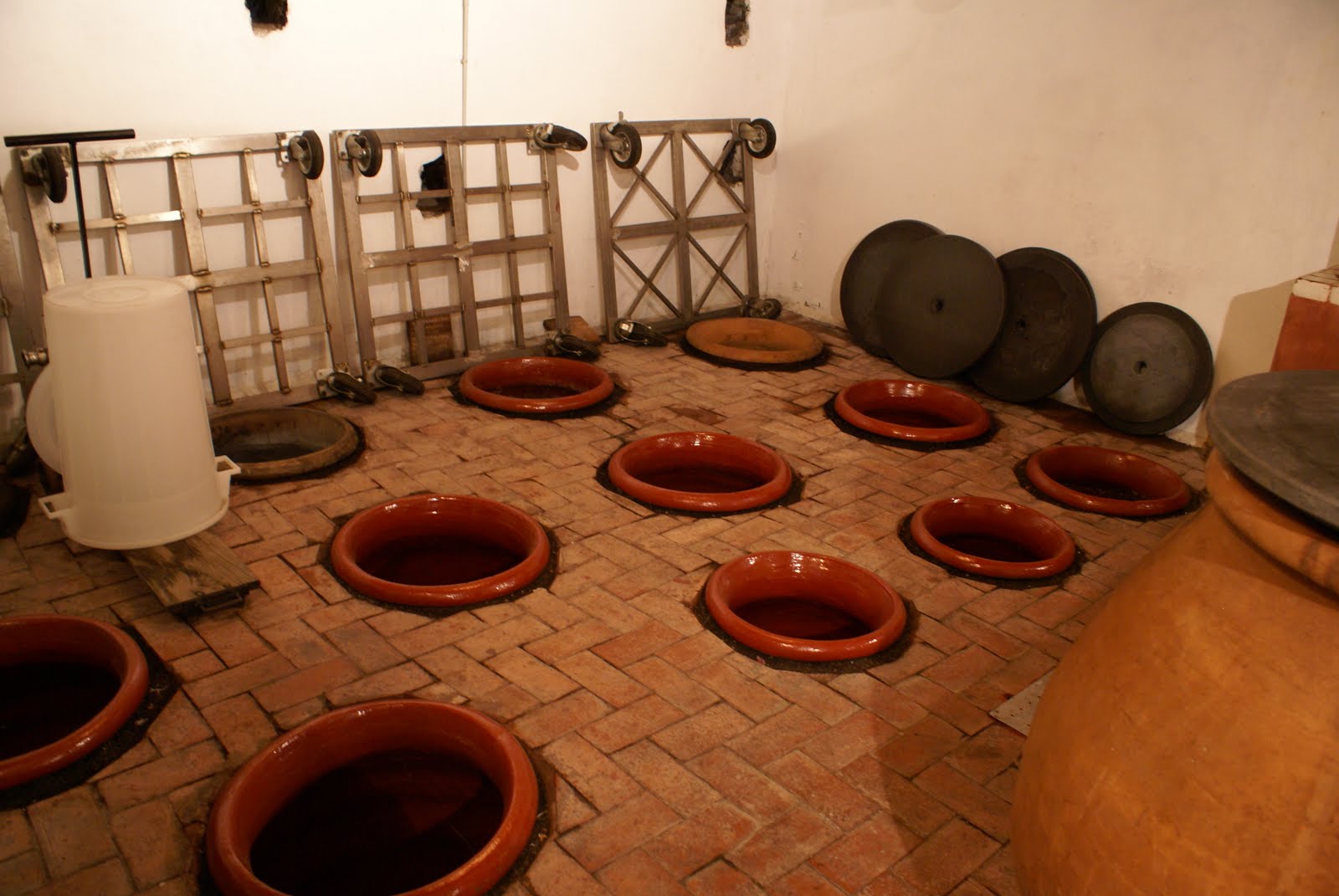On the Etna (1)
Posted on 4 September 2009
I’m on Etna in Sicily to participate in the Vinimilo event, where 26 producers from Italy, France and Spain will present wines made from bush vines (alberello). There are some great names on the roll of honour, and it promises to be an interesting tasting.
Yesterday I visited Frank Cornelissen, who is producing some of the most remarkable ‘natural’ wines anywhere. A Belgian who decided to find a terroir suitable for his ideas of making wine with no chemicals whatsoever (not only herbicides, yeast or enzymes as in organic viticulture, but also without any copper or sulphur, which is very unusual and really rather bold), Frank settled on Etna in late 2000. Since its first vintages, his flagship wine, called Magma, has attracted a lot of attention. Frank now works on 10 hectares of land in several plots on the northern slopes of Etna (where the very dry, disease-free climate makes it viable to grow vines without chemical interventions) and only produces around 15,000 bottles.
The viticulture and vinification are unusual (wines are fermented in clay amphorae on their skins, including the white Magma which stays on skins for three months!) but how the wines taste is even more remarkable. Very often, ‘natural’ wines are challenging, showing some rustic, at times unclean aromas and flavours which are often considered the price to pay for increased mineral expression and grape-generated ‘naturality’. With Cornelissen’s wines, we have none of that. After several vintages with bacterial deviations and high volatile acidity, the range of wines I tasted from 2007 and 2008 is incredibly clean and pure. The Munjebel Bianco 4 (all the wines are bottled as table wines which until this year, were not allowed to show the vintage on the label; this is from 2007) was one of the very best skin-contact whites I’ve ever tried. Partly because it shows no notes of skin contact! An amazingly expressive wine with intense notes of citrusy, tangeriney fruit, it has a powerful saline minerality but stays very clean: no lifted notes, no macerative aromas.
Frank’s inexpensive bottling Contadino 6 [2008] blends Etna’s leading grape variety Nerello Mascalese with some other grapes; it has a spicey, pomegrenatey nose typical of ‘natural’ reds with wonderful purity and natural freshness. The Munjebel Rosso 5 (a blend of 2007 and 2008) is even more engaging. It’s a 100% Nerello with a light colour and one of the most hauntingly pure fruity noses I’ve encountered: like biting into a freshly picked strawberry. Clean, mineral, refreshingly tannic (those crisp tannins reminded me of the Terre Nere 2007 I blogged on yesterday); the directness of fruit is really unique. The main wine here, Magma 6, is a 2007 single vineyard bottling from ~100-year-old vines. Much different in style, it introduces evolved, spicy, meaty notes into the bouquet, and is less direct than the other reds here. Lots of anise and coriander spice in this one, it is a complex wine that really needs some time in the glass to develop.
Cornelissen’s work is ground-breaking and shows nothing is impossible in the world of wine. The flavour of his wines is really unique. Though the production is small, the estate’s fame has started to spread, and the wines are available e.g. in the UK through Les Caves de Pyrène, and Denmark through Atomwine. If you’re interested in ‘natural’ wines you owe it to yourself to try these.
Stay tuned for more Etna reports tomorrow.




